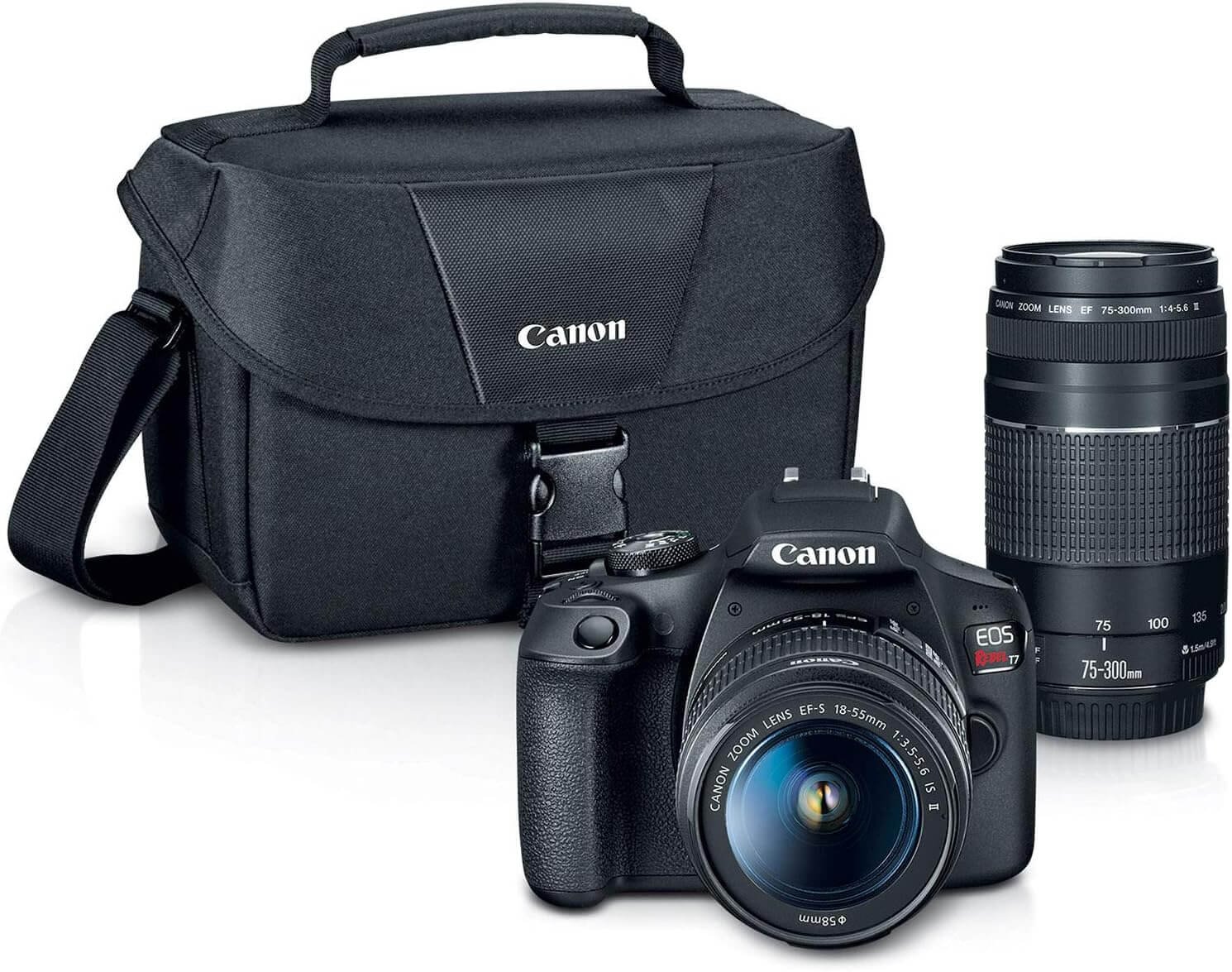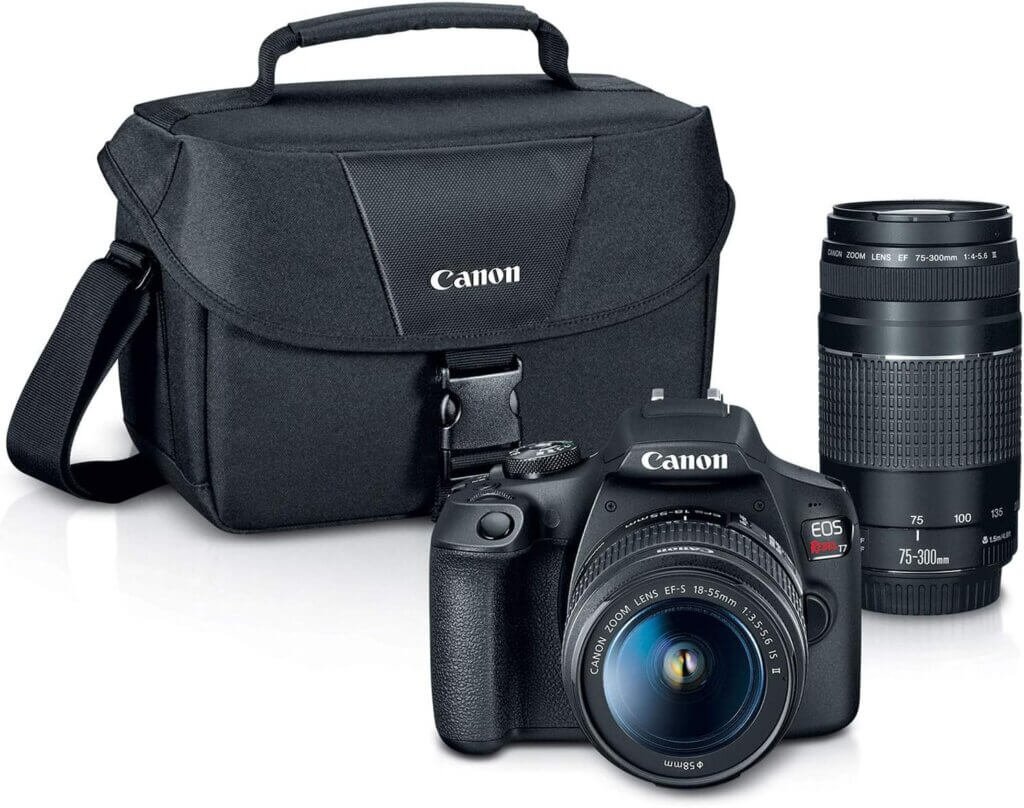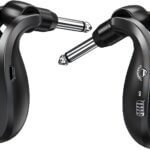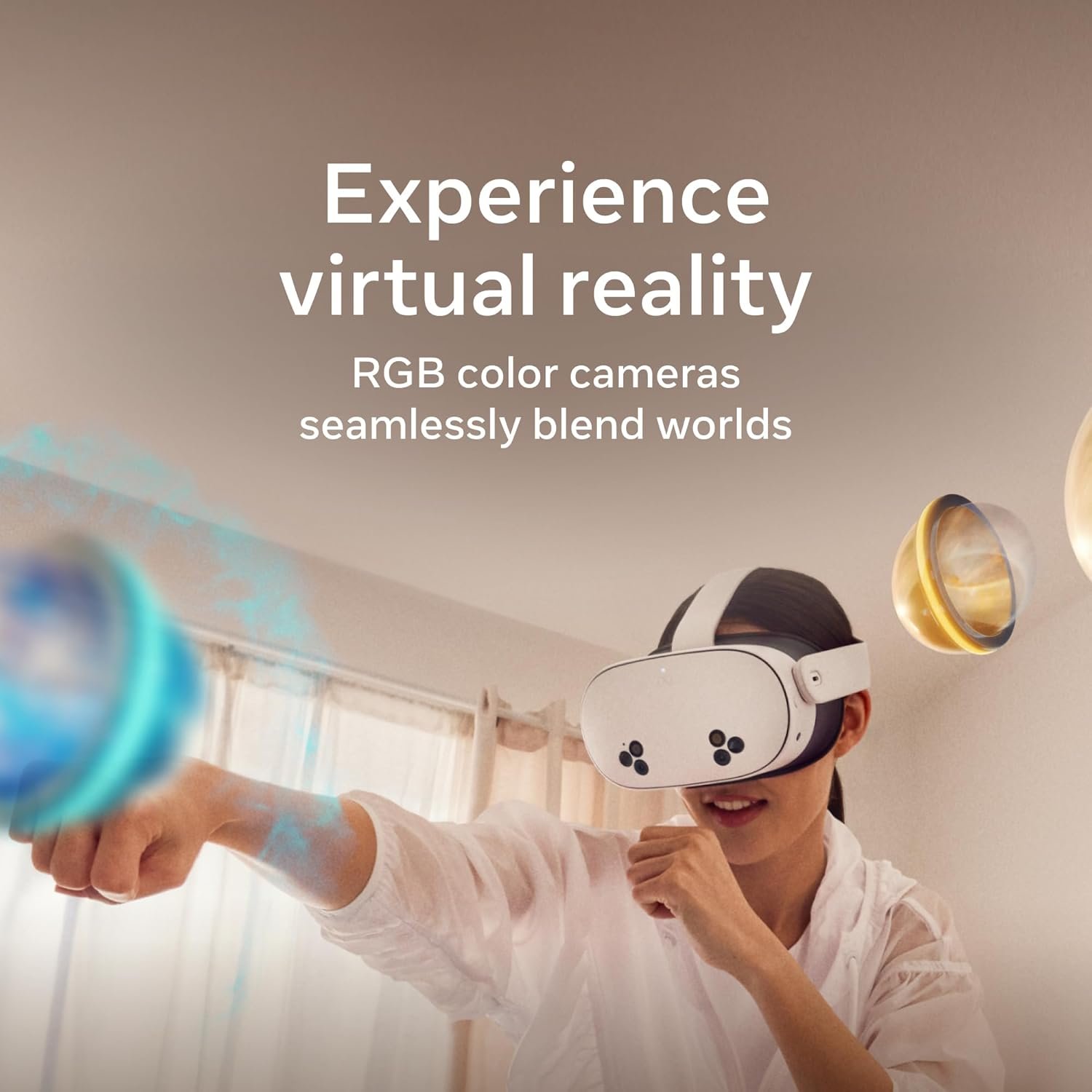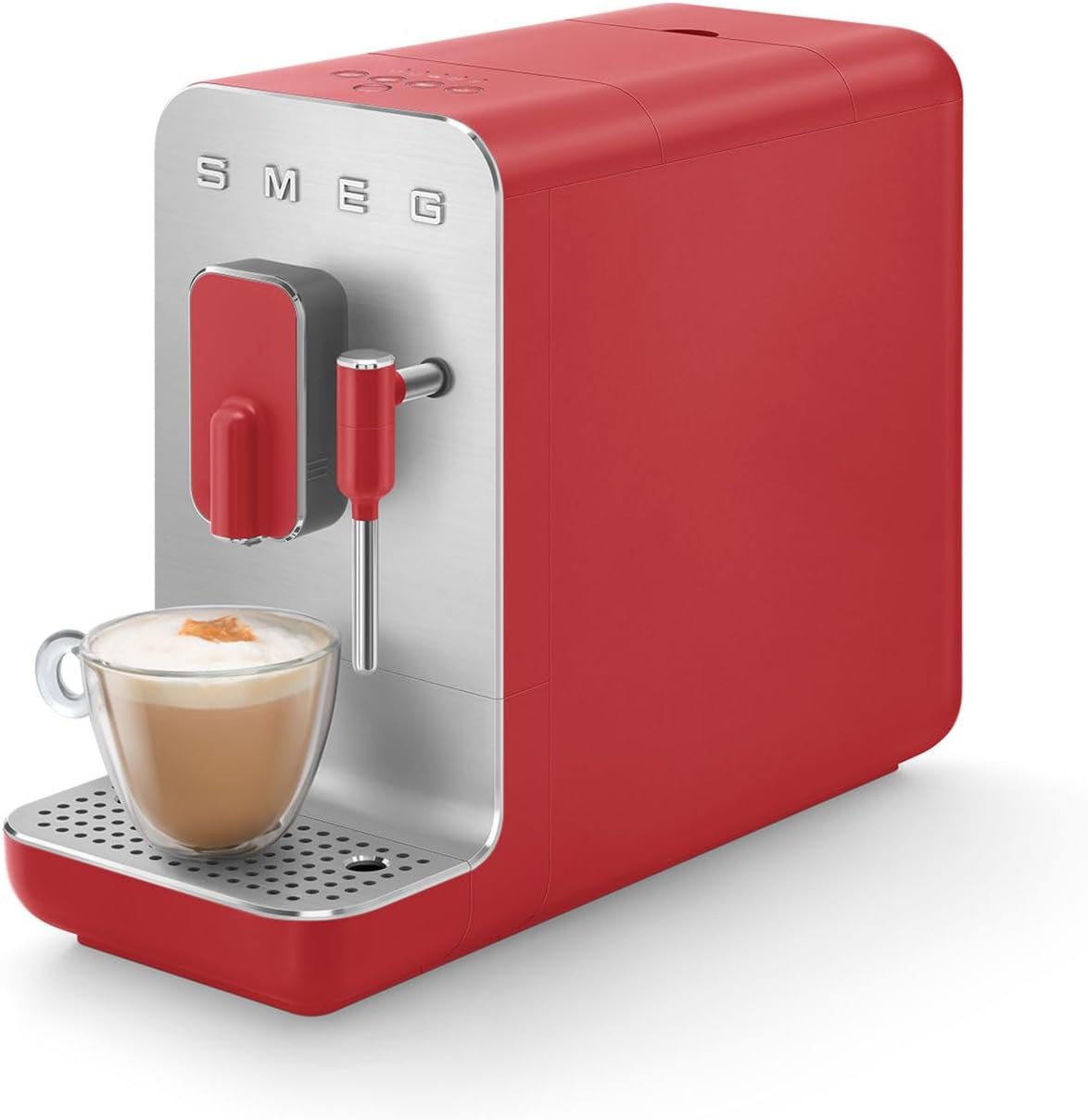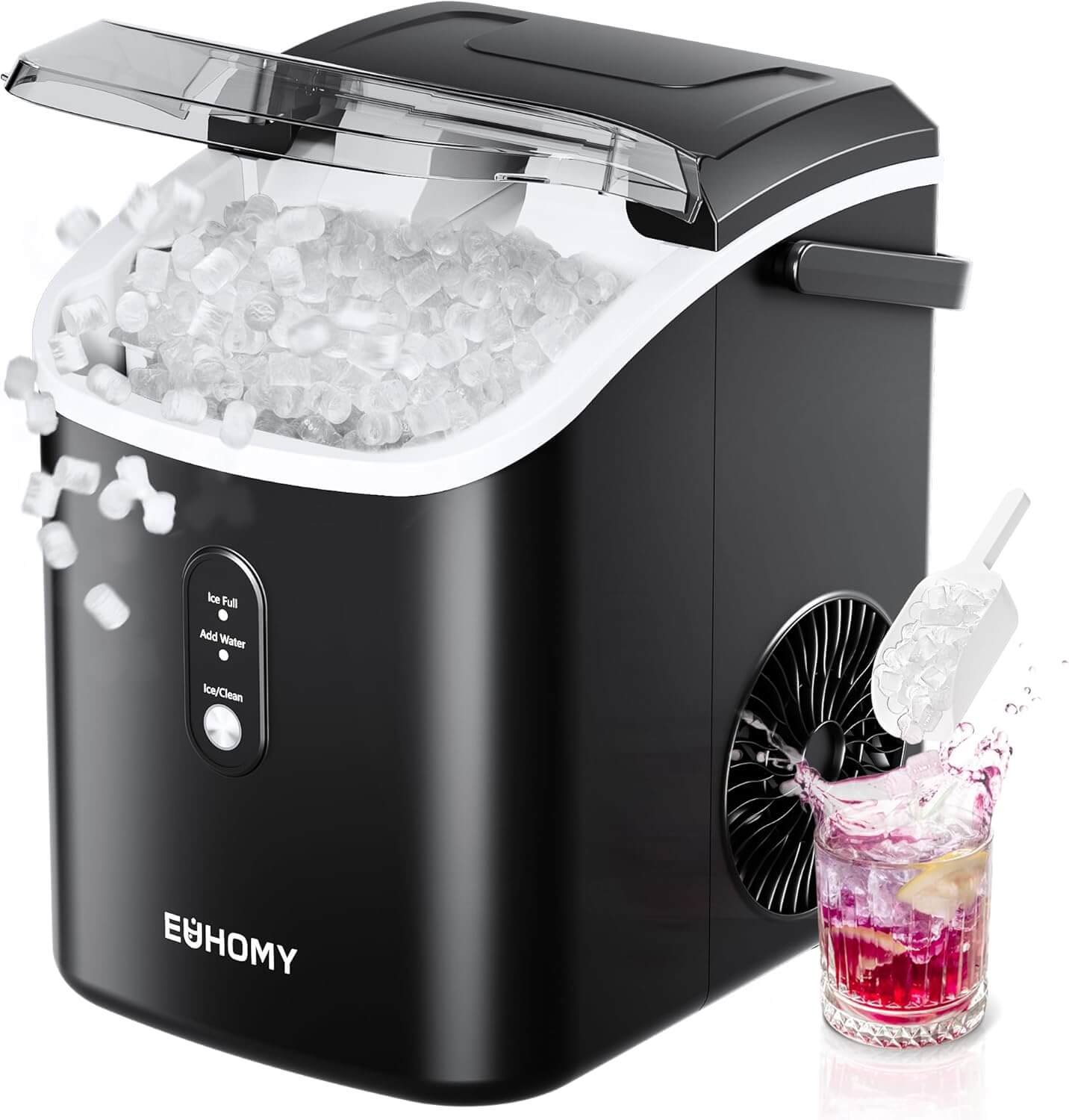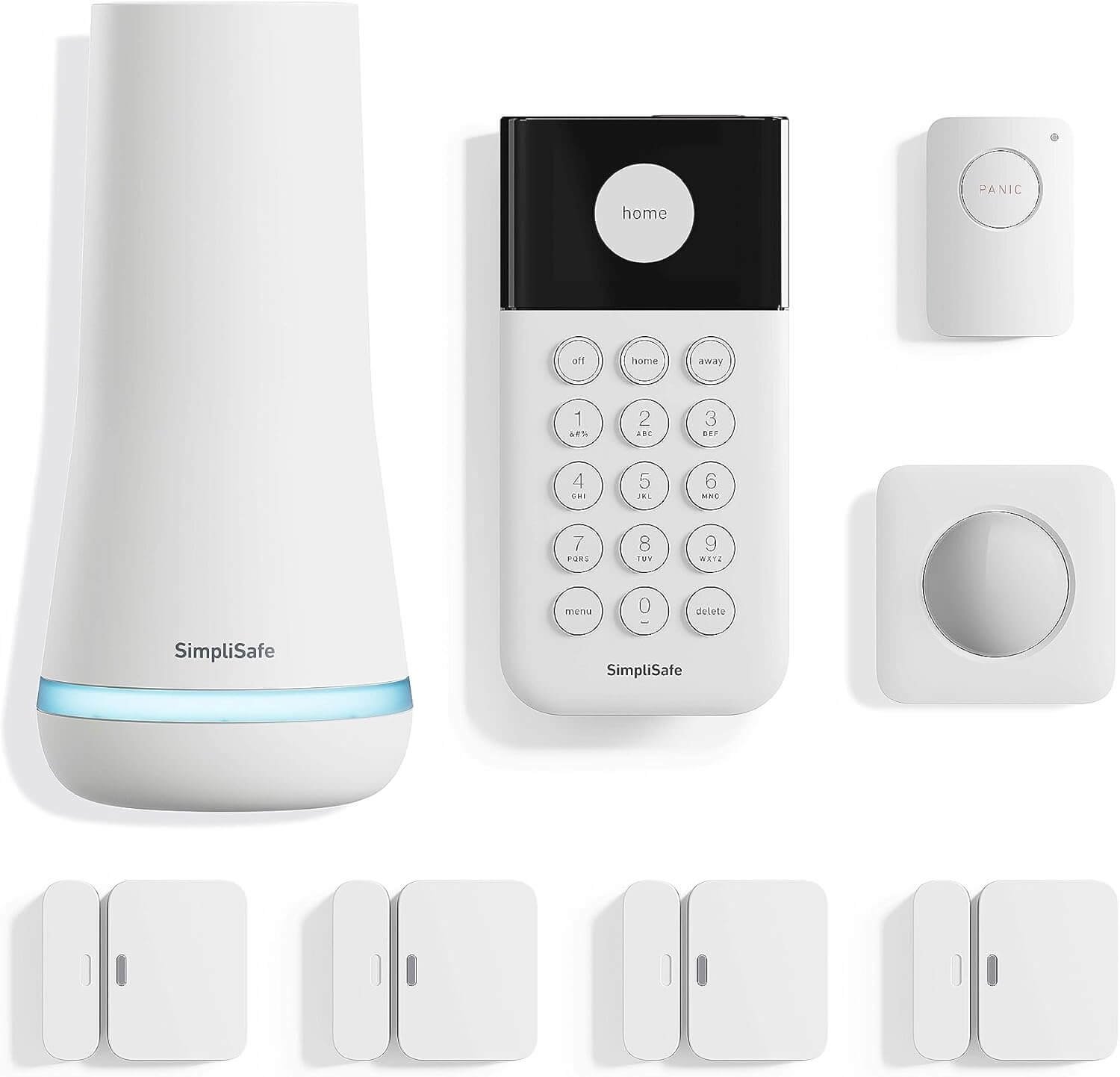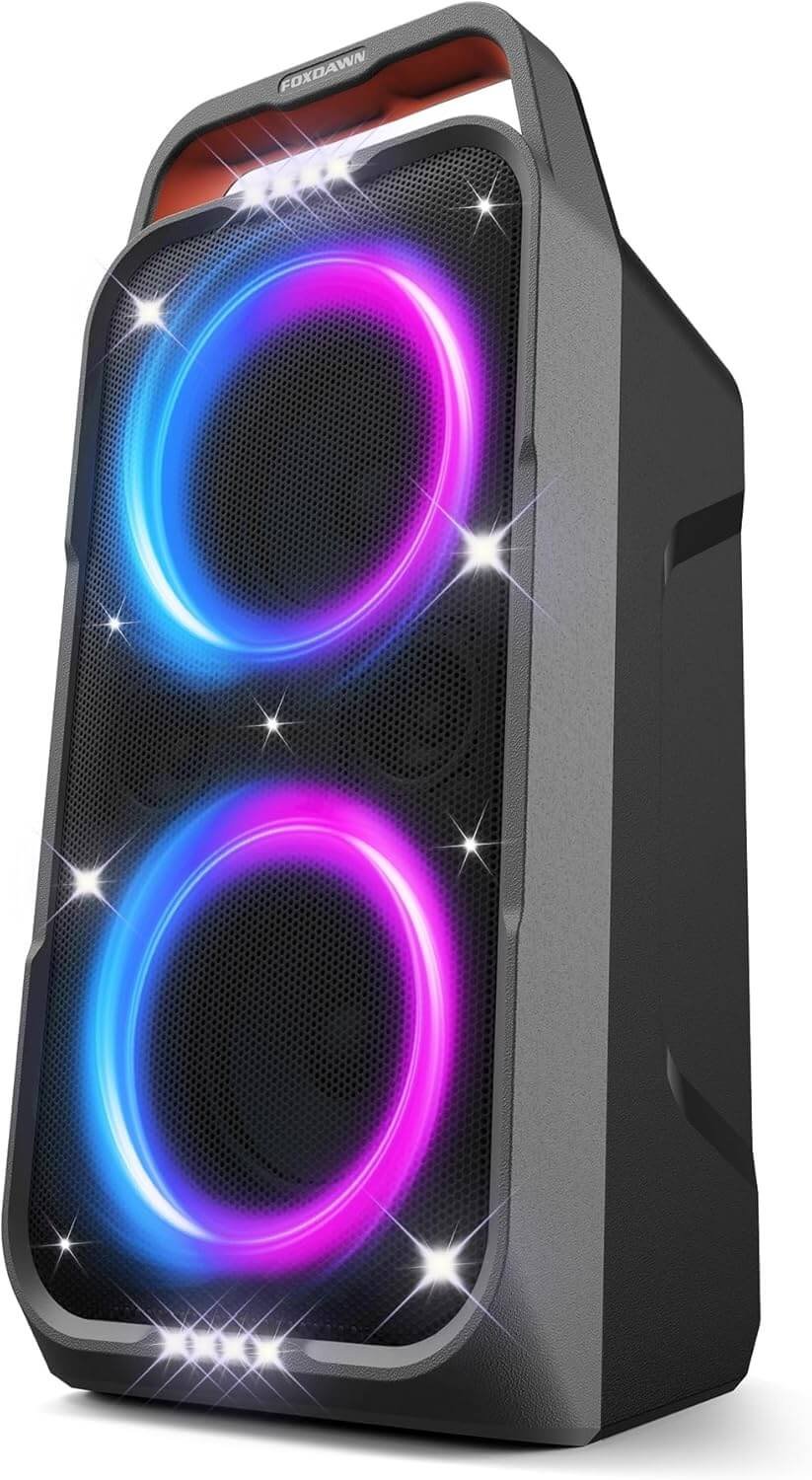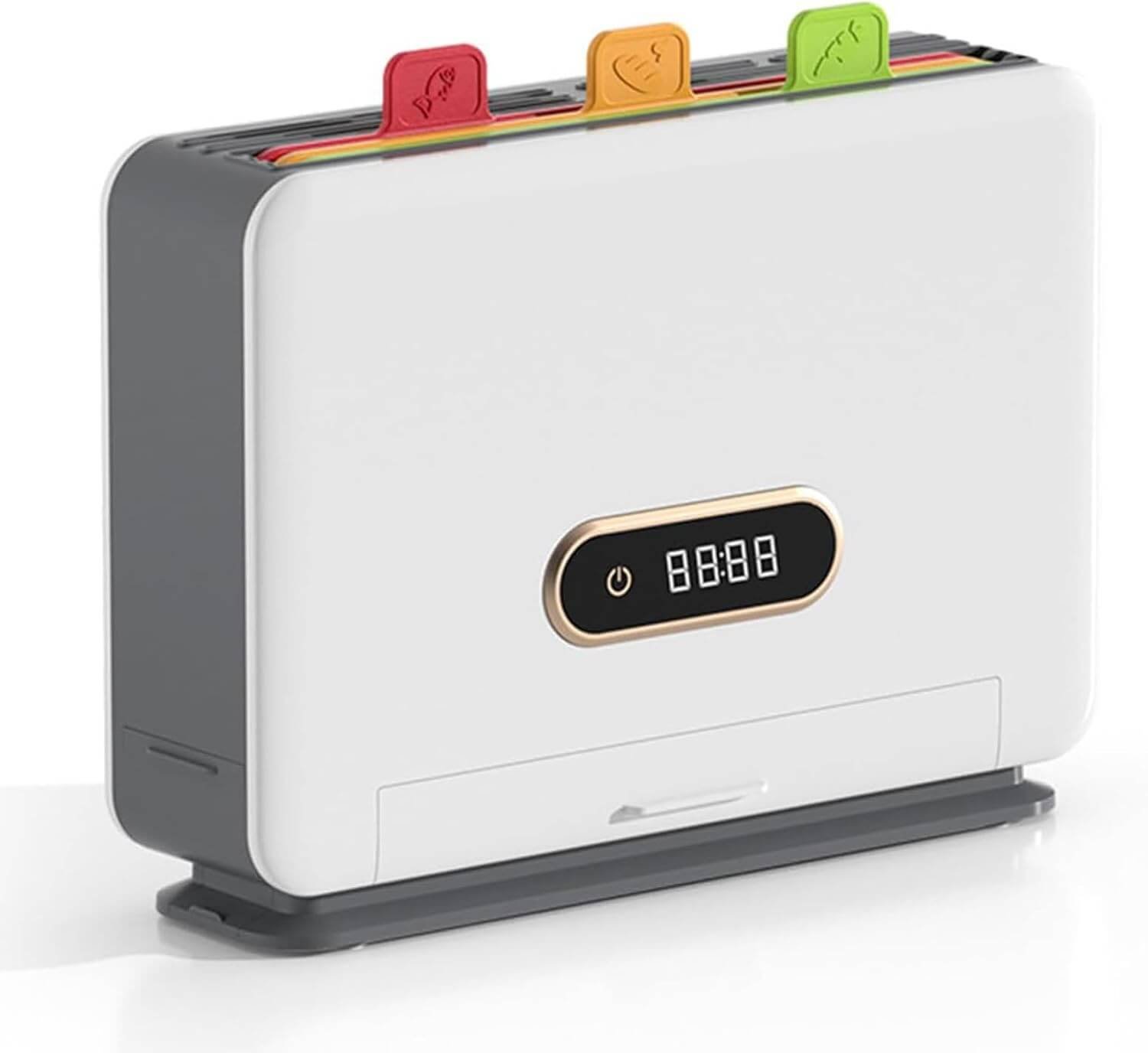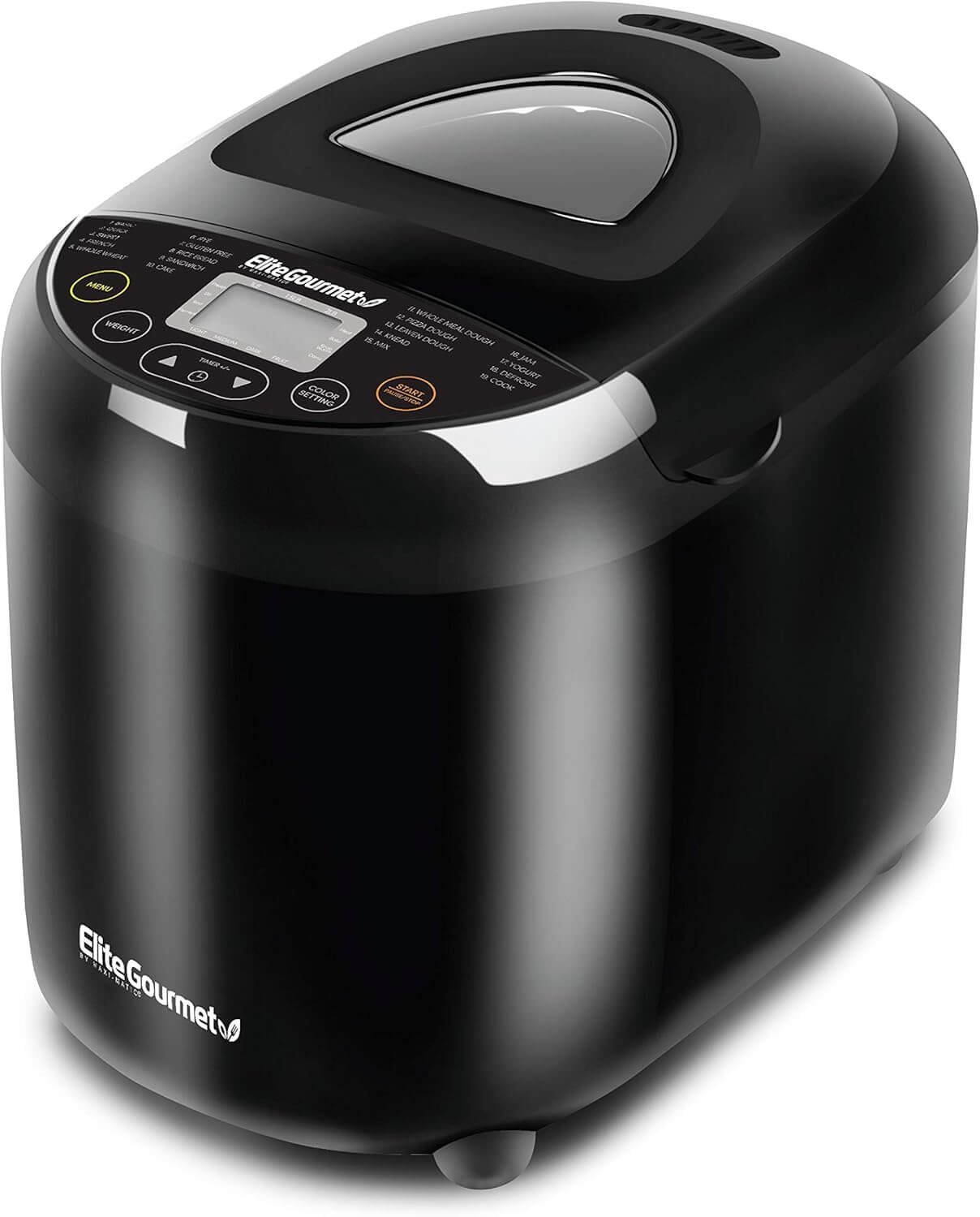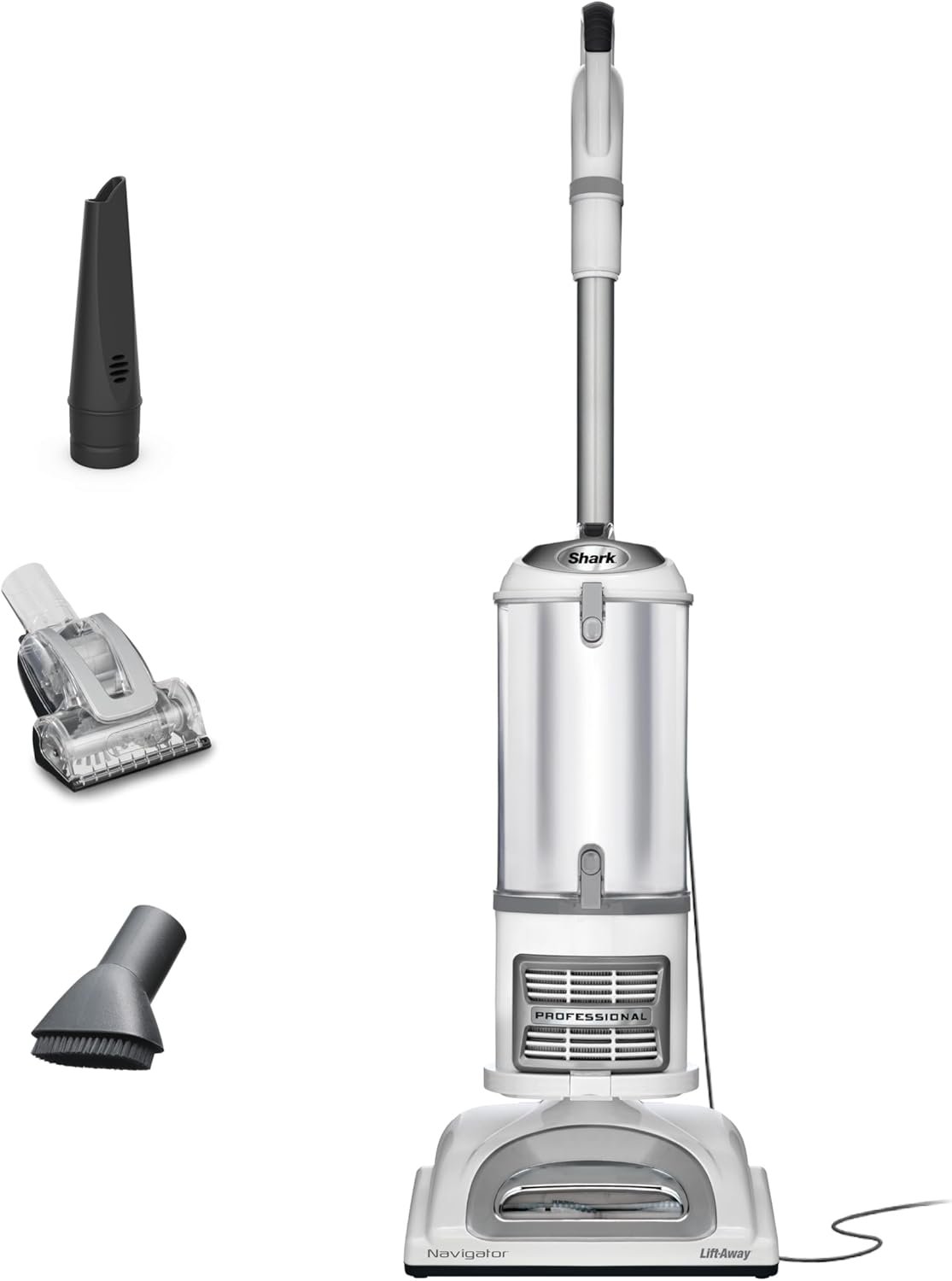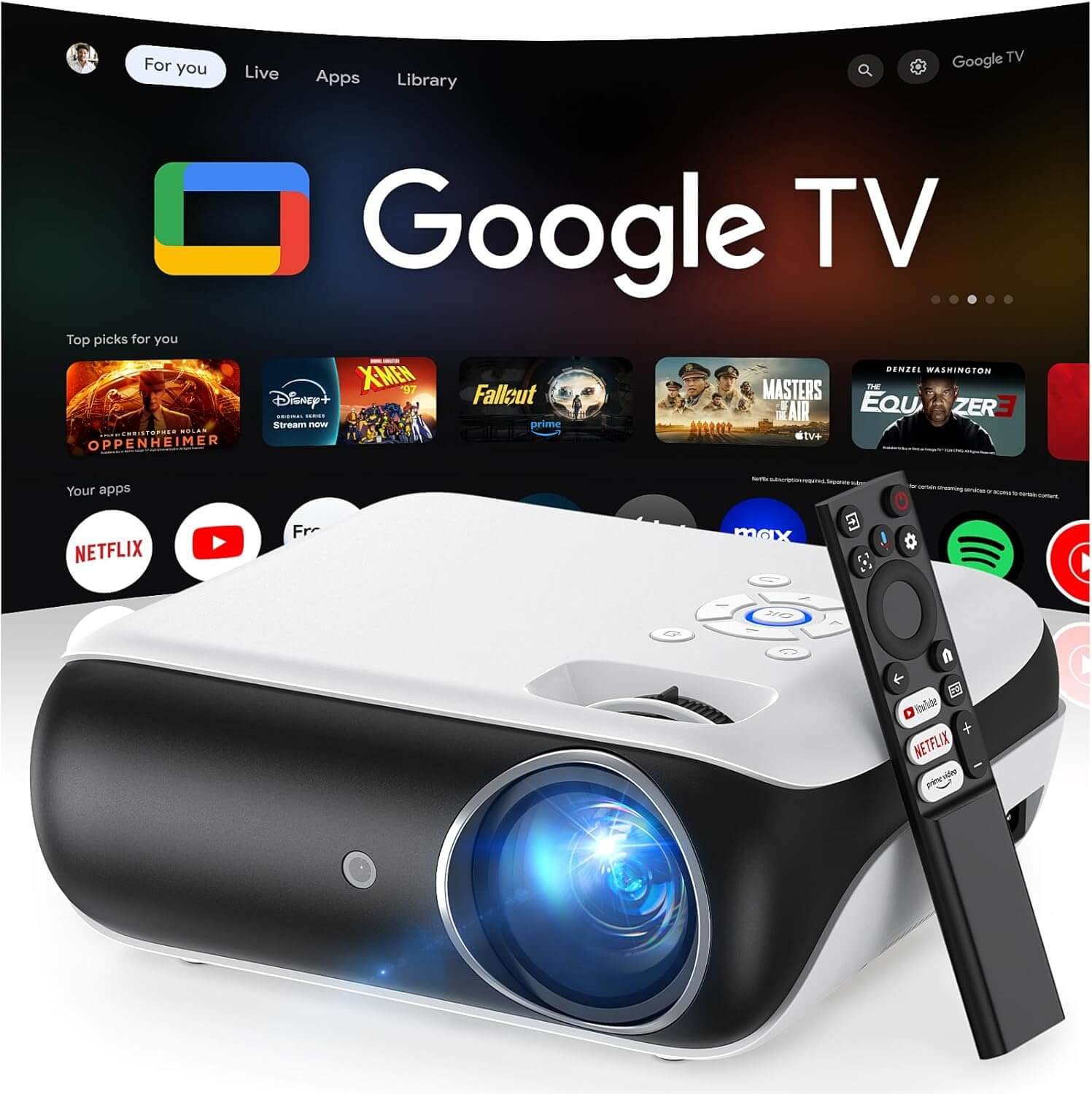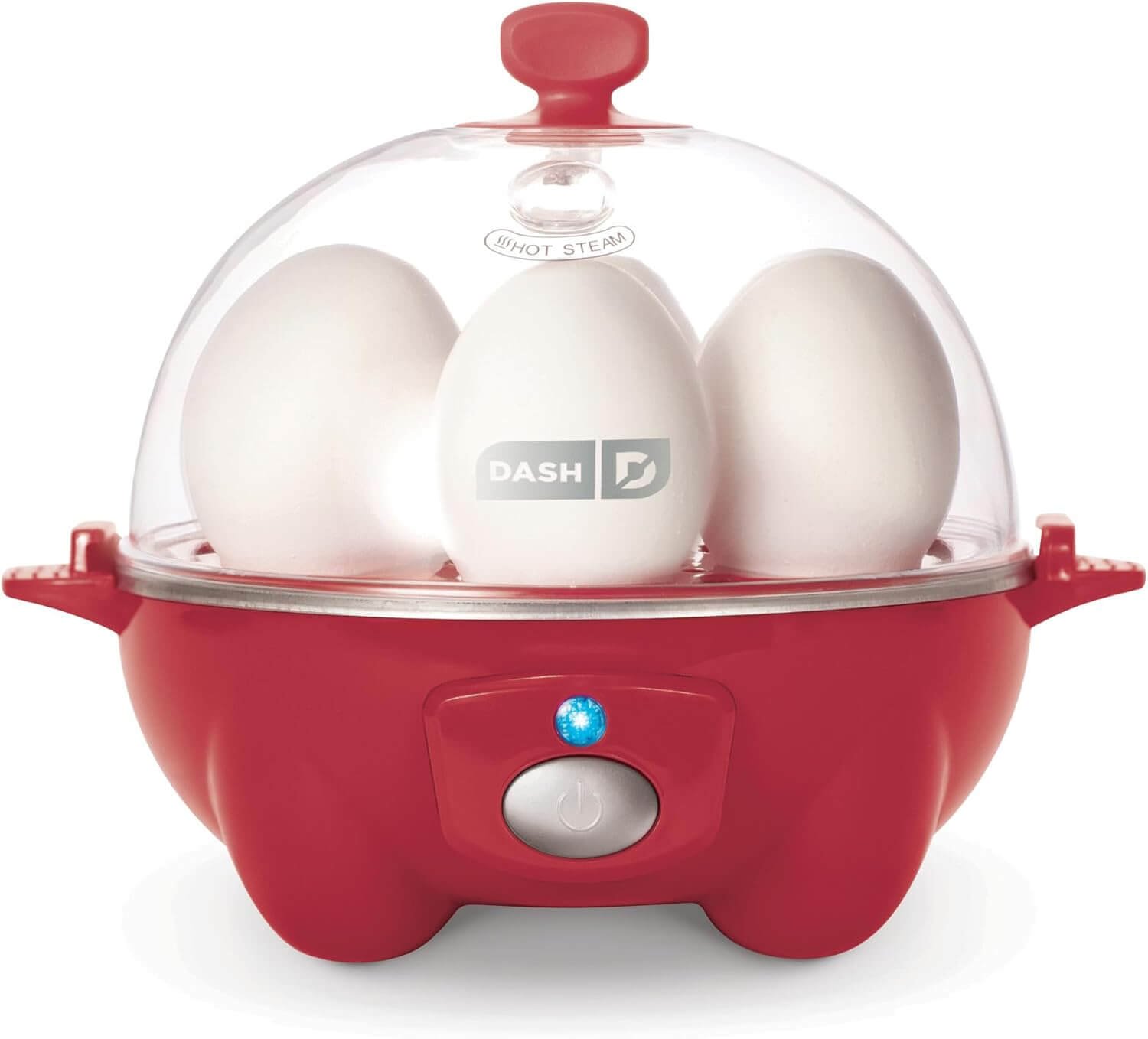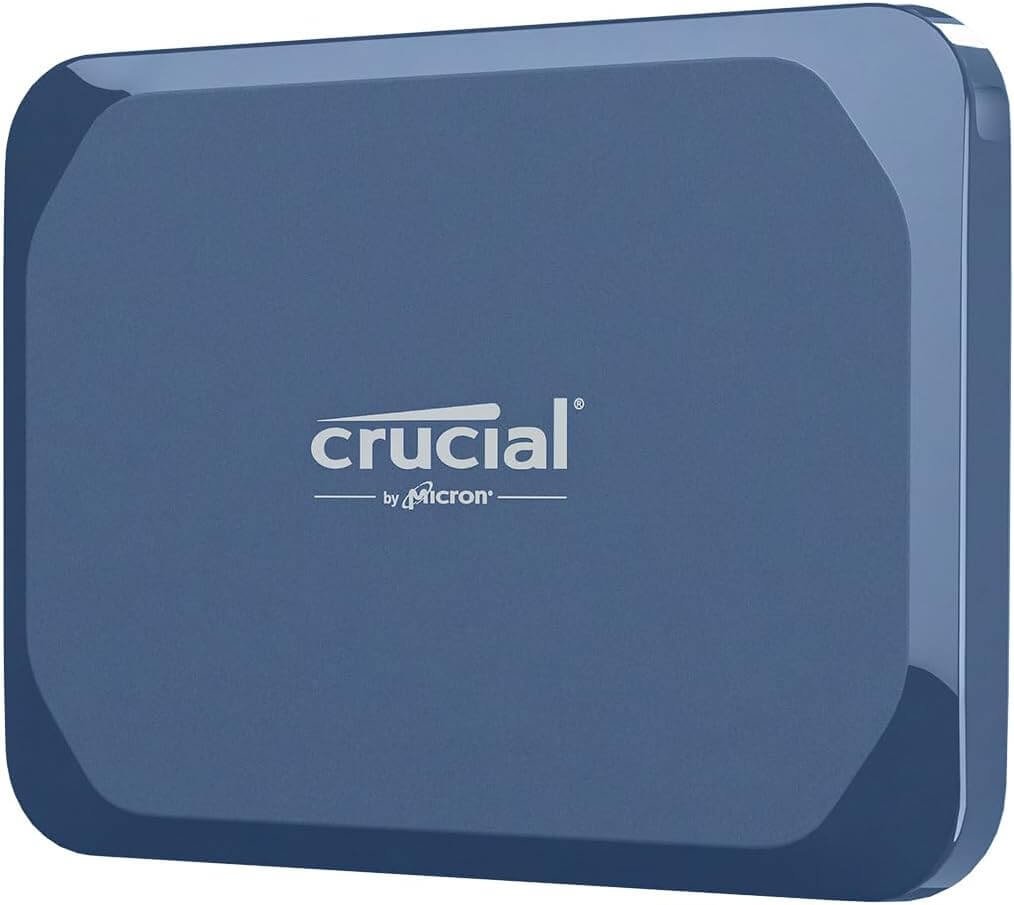Introduction
The Canon EOS Rebel T7 is an exceptional entry-level DSLR that has garnered significant attention from beginner photographers and enthusiasts alike. Renowned for its user-friendly interface and impressive image quality, the Rebel T7 stands as a remarkable gateway into the world of digital photography. This camera not only allows users to capture stunning images but also impresses with its range of features that cater to both novices and those looking to refine their skills.
One of the most compelling aspects of the Rebel T7 is the 2 lens kit that accompanies the camera body, which includes the EF 18-55mm lens and the EF 75-300mm lens. This combination enhances the versatility of the camera, making it suitable for a variety of shooting conditions and subjects. The EF 18-55mm lens is ideal for capturing wide-angle views, making it perfect for landscapes and group photos, while the EF 75-300mm lens offers the ability to zoom in on distant subjects, such as wildlife or sports events. This varied lens selection significantly broadens the photographic possibilities for users, allowing them to explore different styles and subjects without the immediate need for additional equipment.
In an age where photography is increasingly accessible, the Canon EOS Rebel T7 and its accompanying lens kit provide a well-rounded solution for those seeking to develop their photographic skills. The blend of functionality and performance in this camera system establishes it as a popular choice among aspiring photographers. As we delve deeper into this review, we will explore the specifications, usability, and overall performance of the Rebel T7, as well as the advantages offered by the two included lenses.
Key Features of the Canon EOS Rebel T7
The Canon EOS Rebel T7 is a popular entry-level DSLR designed for both novice and experienced photographers. At the heart of the camera lies its impressive 24.1 MP APS-C sensor, which captures high-resolution images with remarkable detail and clarity. This sensor is pivotal for those looking to shoot in various lighting conditions, ensuring that even low-light photographs exhibit minimal noise and enhanced dynamic range.
Complementing the sensor is the DIGIC 4+ image processor, which significantly boosts processing speed and image quality. This advanced processor enables faster frame rates, ensuring that quick actions or fleeting moments can be captured seamlessly. With the DIGIC 4+, users can also benefit from enhanced color accuracy and the ability to shoot continuously at approximately three frames per second, making it suitable for capturing moving subjects.
One of the standout features of the Canon EOS Rebel T7 is its 9-point autofocus system, which allows for precise focusing on subjects that may be stationary or in motion. This feature is particularly beneficial for beginners, as it simplifies the process of capturing sharp images without extensive prior knowledge of manual focusing techniques. The camera also includes a variety of metering modes that can adapt to varying scenes, further aiding in achieving the desired exposure.
Moreover, the built-in Wi-Fi and NFC capabilities provide seamless connectivity options. These features allow users to easily share their images with smartphones or tablets, facilitating quick uploads to social media or cloud storage. The integration of modern technology within a classic DSLR design makes the Canon EOS Rebel T7 both user-friendly and efficient, appealing to a wide spectrum of photography enthusiasts.
Lens Overview: EF 18-55mm and EF 75-300mm
The Canon EOS Rebel T7 DSLR camera kit includes two versatile lenses that cater to a wide range of photography needs: the EF 18-55mm and the EF 75-300mm. Each lens offers distinctive features that complement various shooting scenarios, making this kit an excellent choice for both novice and experienced photographers.
The EF 18-55mm lens is particularly praised for its adaptability in everyday photography. With a focal length range that covers wide-angle to short-telephoto, it is suitable for capturing landscapes, portraits, and even close-up shots. The lens aperture ranges from f/3.5 to f/5.6, allowing for decent low-light performance and depth of field control. Additionally, it features Canon’s Optical Image Stabilization, which minimizes camera shake, an essential advantage for handheld shooting. This stability ensures that sharper images can be captured in various light conditions.
On the other hand, the EF 75-300mm lens is engineered for photographers who prioritize long-range shooting. With a focal length that extends up to 300mm, it excels in capturing distant subjects, making it ideal for wildlife photography, sports events, or even candid street shots from afar. Its aperture ranges from f/4 to f/5.6, offering considerable versatility but requiring careful handling in lower light environments. This lens also includes a feature to minimize vibration, enhancing image clarity for distant subjects.
Both lenses included in the Canon EOS Rebel T7 kit exemplify the flexibility required for a varied photographic journey. Whether users are aiming for wide-angle shots or focusing on far-off subjects, these lenses provide robust options tailored to different scenarios while upholding the brand’s reputation for quality optics.
Performance and Image Quality
The Canon EOS Rebel T7 is a versatile DSLR camera that excels in various shooting environments, making it a suitable option for amateur and seasoned photographers alike. One of the standout features of the Rebel T7 is its performance in low-light conditions. Equipped with an APS-C size sensor and a DIGIC 4+ image processor, it captures images with impressive clarity even when lighting is less than ideal. Users have noted that while shooting at higher ISO settings, the noise levels remain manageable, allowing for clean, usable shots.
In bright conditions, the Rebel T7 continues to shine. The camera’s 9-point AF system ensures quick and accurate focusing, even in challenging lighting situations. The dual lens kit—typically featuring an 18-55mm and a 75-300mm lens—offers versatility, allowing photographers to capture everything from wide-angle landscapes to distant subjects. The color accuracy is commendable; images retain natural hues and vibrance, making the post-processing effort considerably minimal.
Additionally, the EOS Rebel T7 supports various shooting modes that help enhance its performance. The dedicated scene modes, such as Portrait and Landscape, optimize image settings to suit the specific type of photography being undertaken. Users often appreciate the detailed textures and sharp edges in their photos, highlighting the camera’s ability to render fine details faithfully. The built-in Wi-Fi and NFC connectivity further enhance its usability, allowing for seamless sharing of images taken in diverse environments.
The combination of effective noise control, accurate color reproduction, and solid autofocus capabilities contributes significantly to the overall image quality produced by the Canon EOS Rebel T7. As photographers explore various lighting conditions with both lenses, they can be assured that this camera will deliver significant results that meet their expectations.
User Experience and Handling
The Canon EOS Rebel T7 DSLR Camera is designed to cater to both novice users and experienced photographers, providing an intuitive user experience that promotes ease of use without compromising on functionality. One of the standout features of the T7 is its ergonomic design. The camera fits comfortably in the hand, ensuring that even extended shooting sessions do not lead to discomfort or fatigue. This is particularly beneficial for users capturing events or engaging in landscape photography, where time spent holding the camera can be prolonged.
The button layout on the EOS Rebel T7 is strategically arranged to facilitate quick access to essential functions. Key settings, including ISO, exposure compensation, and shooting modes, are readily accessible, allowing users to make adjustments on the fly. This thoughtful arrangement is a significant advantage for beginners who may be apprehensive about using a DSLR for the first time, as it reduces the learning curve associated with navigating complicated settings.
Furthermore, the camera features an intuitive menu system that organizes settings clearly, making it straightforward for users to locate and adjust preferences. The LCD touchscreen, though not fully articulated, further enhances usability by providing a means to visualize settings in real-time. As a result, both newcomers and seasoned photographers can quickly adjust their shooting parameters without feeling overwhelmed.
Overall, the Canon EOS Rebel T7 offers a user-friendly experience that prioritizes accessibility and comfort. Its design considerations demonstrate Canon’s commitment to enhancing the photography journey for all users. From the thoughtful placement of buttons to the comfortable grip for long shoots, the EOS Rebel T7 ensures that capturing stunning images remains a stress-free endeavor, inviting users to explore their creativity without hindrance.
Connectivity and Sharing Options
The Canon EOS Rebel T7 DSLR camera is designed with connectivity in mind, offering robust features that enhance photo sharing and image transfer capabilities. One of the notable aspects of the T7 is its built-in Wi-Fi functionality, which allows users to easily connect their camera to a compatible smartphone or tablet. This wireless feature simplifies the process of transferring images, enabling photographers to quickly share their work on social media platforms or with friends and family directly from their mobile devices.
Additionally, the Rebel T7 incorporates Near Field Communication (NFC), which provides a seamless way to establish a connection with NFC-capable devices. To use this feature, users simply need to tap their compatible smartphone against the camera, establishing a swift connection for data transfer. This functionality significantly streamlines the process of uploading photos, making it an excellent choice for those who wish to share their photography in real-time.
The Canon Camera Connect app complements these connectivity features by providing a user-friendly interface for controlling the camera remotely, facilitating photo transfers, and managing settings. Users can preview images, adjust camera settings, and even trigger the shutter from their mobile device, offering additional flexibility in various shooting scenarios. This level of integration enhances the overall user experience, making it easier for photographers to maintain connectivity and share their creative work effortlessly.
In summary, the connectivity and sharing options of the Canon EOS Rebel T7 greatly enhance its usability and appeal, particularly for photographers who value immediate sharing of their images. With built-in Wi-Fi and NFC capabilities, combined with the Canon Camera Connect app, making photographic sharing and transfers convenient and efficient is an integral part of the T7 experience.
Comparisons with Other Similar DSLR Cameras
The Canon EOS Rebel T7 positions itself competitively within the entry-level DSLR market, engaging with several notable alternatives. Among its primary competitors are the Nikon D3500 and the Pentax K-70. Each of these cameras has distinct features that cater to different user preferences, making it essential to understand their comparisons in functionality, ergonomics, and image quality.
Starting with the Nikon D3500, it is often celebrated for its exceptional battery life and an intuitive user interface, particularly appealing to beginners. The D3500 offers a 24.2-megapixel sensor, slightly surpassing the T7’s 24.1-megapixel capability, providing similar image fidelity. However, the authorized sensitivity range of T7 slightly edges out in low-light conditions, showcasing its versatility for various shooting environments. Additionally, the D3500 typically features Bluetooth connectivity, allowing for easier image transfer to mobile devices, which may be an important aspect for users who share their photos online frequently.
On the other hand, the Pentax K-70 presents a weather-sealed body, providing additional durability. This feature is particularly appealing for outdoor photographers who might encounter various weather conditions. The K-70 also houses a 24-megapixel sensor, rivaling the image quality found in the Rebel T7. Nevertheless, the Canon model boasts a more comprehensive selection of lenses due to Canon’s larger ecosystem, enhancing its usability for photographers seeking diverse options. In terms of live-view capabilities and autofocus performance, the T7 demonstrates a notable advantage, making it a practical choice for novices venturing into video and portrait photography.
While these cameras share similar price points, the decision ultimately hinges on personalized preferences. The Canon EOS Rebel T7’s balanced feature set and user-friendly interface make it a compelling option for those entering the world of DSLR photography, while still appreciating the notable strengths of its rivals.
Pros and Cons of the Canon EOS Rebel T7
The Canon EOS Rebel T7 stands out in the entry-level DSLR market, offering a mix of benefits and drawbacks that potential buyers should consider. One of the significant advantages of the T7 is its impressive image quality, attributed to its 24.1-megapixel APS-C sensor. This sensor allows for detailed and vibrant images, making it suitable for various photography styles, from portraits to landscapes. Additionally, the Rebel T7 features a user-friendly interface, which is ideal for beginners. Its built-in Wi-Fi and NFC capabilities enable easy sharing of images, enhancing the overall user experience.
Another noteworthy aspect is the lens versatility that comes with this camera kit. The Rebel T7 is often bundled with two lenses—typically an 18-55mm zoom and a 75-300mm telephoto lens. This combination allows users to tackle diverse shooting scenarios, from close-up shots to distant subjects, making it a versatile option for enthusiasts looking to explore photography further. The camera’s optical viewfinder also provides a traditional shooting feel, which many photographers appreciate.
However, it’s essential to recognize some limitations of the Canon EOS Rebel T7. One notable disadvantage is its autofocus performance in low-light conditions, which may struggle compared to more advanced models. The camera uses a 9-point autofocus system that, while effective in well-lit environments, might not meet the expectations of photographers aiming for fast-paced action or low-light scenes. Moreover, the continuous shooting speed is relatively slow at 3 frames per second. This can be a hindrance for those looking to capture quick movements or events. Overall, while the Canon EOS Rebel T7 presents a well-rounded package, potential users should weigh these pros and cons based on their unique photography needs.
Conclusion and Final Thoughts
In reviewing the Canon EOS Rebel T7 DSLR camera with the accompanying two-lens kit, it becomes evident that this model is well-suited for a variety of users, particularly beginner photographers and travel enthusiasts. The combination of user-friendly features, solid image quality, and versatility of the lens options makes the Rebel T7 an attractive choice for those who are entering the world of DSLR photography or seeking to upgrade from basic point-and-shoot cameras.
The Rebel T7 is equipped with an 18-megapixel sensor, enabling it to capture vivid images with rich details. This is particularly beneficial for aspiring photographers who desire high-quality results without the complexities often associated with more advanced models. Furthermore, the dual lens kit offers both a standard zoom and a telephoto option, expanding creative possibilities and allowing users to experiment with different styles of photography.
Travel photographers will appreciate the lightweight design and ease of use of the Canon EOS Rebel T7, making it convenient to carry during on-the-go adventures. The camera’s built-in Wi-Fi and NFC connectivity features facilitate easy sharing of images, enhancing the overall experience for those looking to document their travels. Overall, the Rebel T7 successfully balances performance and accessibility, catering to a wide audience.
In conclusion, the Canon EOS Rebel T7 DSLR camera, paired with its two-lens kit, is highly recommended for individuals who are eager to enhance their photography skills without overwhelming technical challenges. It provides a solid foundation for learning and creating beautiful images, making it an excellent investment for both beginners and those looking to elevate their photographic journey.

